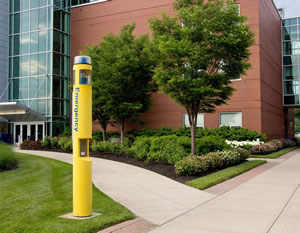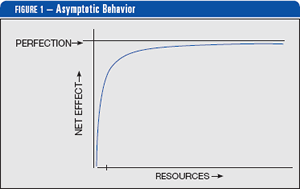What We Can Learn From Mikey Mouse

PHOTO © SHANNON O’CONNOR
Make your elephant fly.” This is one of the management principles at the Walt Disney Company, whose properties are among the safest and cleanest in the world. Disney has adopted a series of these management principles that advocate a particular organizational behavior style that fosters a successful environment for their company. That environment supports creativity, manages risk, balances outcome versus cost and supports long-term growth. In fact, higher education can learn a lot from Disney, especially with regards to the operational and non-academic side of things. Higher education institutions can often be compared to large elephants, where change can be very difficult to achieve. If for no other reason than to create a safer and more prepared environment for students, faculty and staff, institutions of higher education should challenge their community and foster the right organizational behavior to make their elephants “fly.”
We know that a successful and viable emergency management program encompasses activities across four phases: mitigation/prevention, preparedness, response and recovery. We also know what activities fall under each phase and we know how to conduct them individually. However, emergency management is more about strategic organization-wide behavior than it is about a single process or activity. What good is conducting a risk assessment or an exercise, for example, when there is no follow-through or organizational commitment to improvement? Emergency management cannot be a function completed in isolation by the designated emergency manager. Much like Disney emphasizes safety and cleanliness as everyone’s responsibility, emergency management requires collaborative and proactive participation.
ORGANIZATIONAL BEHAVIOR
There are five fundamental behavioral themes that need to be incorporated into an institution’s everyday modus operandi to achieve strategic organizational success. The corresponding emergency management (EM) principles follow each theme.
1) “Whole community” operation. FEMA uses the term “whole community” as a modern concept of conducting emergency management inclusive of all aspects and groups in a community. Taking that one step further, institutions must recognize that they also have a “whole community” responsibility to serve their students, faculty, staff and visitors by operating as one entity. The organization must be fluid and synchronized instead of operating as an “organization of organizations” with direction compartmentalized into isolated silos. Every department and division should execute the mission of the institution as a whole community. “All for one and one for all” is another valuable management principle of the Walt Disney Company.
EM subset: Unified planning. In much the same way, individual organizational units contribute first and foremost collaboratively to the overall institution’s emergency plans and programs. They may also maintain internal department procedures that may outline specific tactical or technical guidance or procedures to achieve the overall outcome of the plan.
2) Collaborative and coordinated information management. Institutions should engage in daily operations via teamwork and ownership of shared responsibilities. Individuals with important functional responsibilities should not be the sole proprietors and administrators of everything related to those functions and should allow access and communication outside of their organizational entity through a coordinated and collaborative process. “Share the spotlight” is the Disney management principle that refers to strategic partnerships.
EM subset: Access and control of emergency support functions. In certain cases, we need to be flexible enough to allow others to have access to our functional areas in order to facilitate better information sharing and communication regarding threats, hazards and emergency actions, and to ensure redundancy.
EM subset: Coordinated communications. Coordinated internal information sharing and coordinated internal communications need to be built from the bottom up so that we operate this way on a routine basis. Further, personnel must be empowered and capable of sharing pertinent information and making appropriate emergency decisions, especially regarding threats and appropriate actions to execute a coordinated resolution process.
3) Identify, build and empower roles, not people. Similarly, institutions should shift towards working in terms of key roles, not key personnel, for major emergency functional responsibilities. These roles build redundancy, cross functionality and depth of internal functional responsibilities. In addition, these roles need to be empowered to fulfill the responsibilities that may be necessary to function at any given time. This is much the same way in which Disney builds characters that are independent of the people designing them, playing them or utilizing them in different scenes. The characters always live on.
EM subset: 24/7 capacity for mission-essential functions. A program or operation should not rely solely on one person performing a specific function for survival. Similarly, once a key role is identified, a 24/7/365 plan to fulfill that role must also be initiated.
EM subset: Empowered redundancy. Mission-essential functions need depth of roles that are empowered to fulfill the core responsibilities in the absence of personnel that may traditionally execute them.
4) More timely decisions, less processing and accepting slightly less than perfection. Times are changing. Immediacy of information as well as actions count increasingly more, now more than ever. Social media has only increased that urgency.
The old way of bureaucratically processing every actionable decision is no longer compatible with the expectations of the general public. Asymptotic behavior (see Figure 1), referring to behavior that involves spending an increasing amount of resources that subsequently yield decreasing amounts of net effect (yet still not quite reaching perfection), is not beneficial, nor is it best practice. We need to spend less time processing decisions for the little net effect they may yield and instead make more timely decisions that may be risk-based, understanding that while the product may not be perfect, it still gets the job done. The proper balance of risk with outcome is critical. Disney calls the related management principle, “Dare to dare.”
EM subset: Timely emergency decisions. We need to foster and create an environment where emergency decisions are made in a timely, efficient and effective manner.

DARE TO DARE. Asymptotic behavior, referring to behavior that involves spending an increasing amount of resources that subsequently yield decreasing amounts of net effect (yet still not quite reaching perfection), is not beneficial, nor is it best practice. We need to spend less time processing decisions for the little net effect they may yield and instead make more timely decisions that may be risk-based, understanding that while the product may not be perfect, it still gets the job done.
5) Commit to improvement and learning, and the changes that come with them. Learning is always a continual process, and institutions must proactively learn from research, best practices and evolving concepts as they develop over time. Exercising to identify operational weaknesses and vulnerabilities is key; however, the follow-up improvement is even more important. Disney calls this management principle, “Practice, practice, practice.” EM subset: Exercise and improvement cycle. Emergency management is not “finished” when plans and procedures are “done.” They need to be continually exercised and practiced with constant improvement based on formal after-action debriefings to identify areas of improvement.
Executive support and involvement in emergency management for the entire campus community — students, faculty, staff and visitors — is critical for the success of your efforts.
This article originally appeared in the College Planning & Management July 2013 issue of Spaces4Learning.